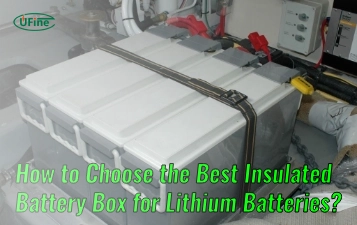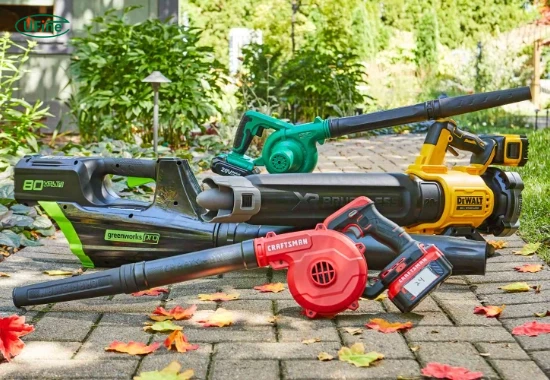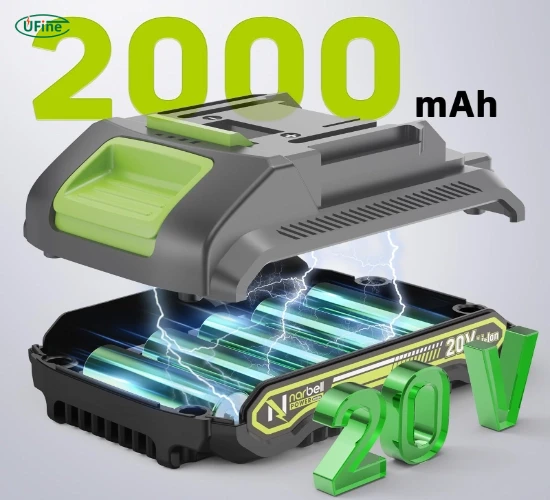Looking for the correct battery for the blower? Whether you’re a homeowner trying to clean up the yard or a professional using a blower daily, choosing the correct battery is critical. A poorly matched battery can reduce performance, shorten runtime, and even shorten the life of your equipment.
So, how do you choose the correct battery for a blower? The short answer is to consider voltage, capacity (Ah), battery chemistry, brand compatibility, and your specific usage needs. In this guide, we’ll walk through every factor in depth so you can make a confident, well-informed choice.
Part 1. What is a blower and why does battery choice matter?
A blower is a powerful tool to push air to remove leaves, dust, grass clippings, or even snow. There are gas-powered, corded electric, and battery-powered versions. Among these, battery-powered blowers are gaining popularity due to their portability, low noise, and eco-friendliness.
However, the battery acts as the tool’s engine. A weak or incompatible battery can make even the best blower feel sluggish. That’s why your blower’s performance, runtime, and durability depend heavily on choosing the correct battery.
Part 2. What types of batteries are used in blowers?
Not all batteries are created equal. The most common battery types used in blowers include
- Nickel-Cadmium (NiCd)
Older technology. Heavier suffers from memory effects and loses capacity over time. Rarely used in new models. - Nickel-Metal Hydride (NiMH)
It’s a step up from NiCd but still bulkier and less efficient than newer tech. Limited use today. - Lithium-Ion (Li-Ion)
The gold standard for modern power tools. Lightweight, powerful, fast-charging, and holds a charge longer.
If you buy a new blower or upgrade your battery, use a lithium-ion battery. It offers the best mix of power, runtime, and reliability.
Part 3. How do you match battery voltage with your blower?
Voltage = power. It dictates how much energy your blower can draw and how forcefully it can move air.
Here are common voltage levels and what they mean:
| Voltage Level | Best For |
|---|---|
| 18V–20V | Light-duty tasks like clearing small patios or garages |
| 36V–40V | Medium-duty work such as moderate leaf piles in mid-sized yards |
| 56V–80V | Heavy-duty jobs including wet leaves, large areas, or commercial use |
Always match the battery voltage with your blower’s requirements. An incorrect voltage (either higher or lower) can damage the blower or drastically reduce its performance.
Part 4. What does amp-hour (Ah) mean in batteries?
Amp-hour, often written as Ah, measures how much energy a battery can store. Think of it as the size of the fuel tank.
- 2.0Ah – Lightweight, shorter runtime (15–20 minutes)
- 4.0Ah – Balanced runtime and weight (30–45 minutes)
- 6.0Ah and above – Long runtime (up to 1 hour or more), heavier
Pro tip: A 4.0Ah–5.0Ah battery strikes the best balance between weight and runtime for most users.
Part 5. How important is battery brand compatibility?
Battery compatibility is essential. Most power tool brands use proprietary battery systems, meaning batteries from one brand typically won’t work with those from another.
For example:
- A DeWalt 20V battery won’t fit a Makita blower.
- A Ryobi 40V battery won’t power a Greenworks blower.
Using a non-compatible battery can lead to:
- Poor performance
- Charging issues
- Risk of overheating or malfunction
Introducing Ufine Battery
If you’re looking for high-quality, customizable lithium-ion batteries, consider Ufine Battery. Ufine provides highly tailored battery solutions to meet your blower’s exact voltage, capacity, and size requirements. Whether you’re a tool brand or a professional user, Ufine offers consistent performance, long cycle life, and safety assurance.
They are an excellent option for OEMs and advanced users who require something beyond standard battery packs.
Part 6. Should you go for a blower with a removable or built-in battery?
Blowers generally come in two designs:
- Built-in Battery
Lightweight and compact
No battery swaps
Once the battery dies, the whole unit must be recharged - Removable Battery
Batteries can be swapped out for more prolonged use
Easy to replace or upgrade
Slightly heavier design
Removable battery blowers are the better choice for most users due to their flexibility and extended usage time.
Part 7. What is the typical runtime of blower batteries?
Runtime depends on three main factors:
- Battery capacity (Ah)
- Motor efficiency
- Blower speed settings (low, medium, turbo)
Here’s a rough guide:
| Battery Size | Approx Runtime (Standard Use) |
|---|---|
| 2.0Ah | 15–20 minutes |
| 4.0Ah | 30–45 minutes |
| 5.0Ah+ | 45–60+ minutes |
Using your blower in turbo mode will drain the battery faster. For longer jobs, keep a second battery charged and ready.
Part 8. Can you use third-party batteries?
Yes, but it comes with risks. Many third-party batteries are cheaper but not always reliable.
Pros:
- Lower cost
- Available in various capacities
Cons:
- It may not fit perfectly
- Lower cycle life
- Safety concerns (overheating, swelling)
- Often voids the tool warranty
Better Option: Ufine Custom Batteries
Suppose you’re looking for reliability outside the brand ecosystem. In that case, Ufine Battery offers custom-built lithium-ion battery packs that meet specific blower requirements. These can be designed to match OEM standards, providing both safety and performance without compromise.
Part 9. What should you check when buying a replacement battery?
When replacing or upgrading your blower battery, use this checklist:
- voltage matches your blower
- Correct battery type (preferably Li-ion)
- Amp-hour rating fits your usage time
- Brand or model compatibility
- Comes from a trusted manufacturer
- Includes warranty (minimum 12 months)
Avoid purchasing a low-quality battery from an untrustworthy source. Quality batteries are worth the investment.
Part 10. How to extend battery life?
Want your battery to last longer? Follow these tips:
- Avoid full discharge – Recharge before it’s entirely dead
- Store in a cool, dry place – Avoid heat and freezing temperatures
- Use only the recommended charger
- Recharge every few months, even when not in use
- Keep battery terminals clean
A quality battery can last 3–5 years or more with proper care.
Part 11. FAQs about battery for blower
What is the best battery for a blower?
The best battery is a lithium-ion battery that matches your blower’s voltage and brand. Look for at least 4.0Ah capacity for solid runtime. Brands like Ufine Battery also offer custom lithium-ion solutions tailored to your blower’s specs.
Can I use a higher Ah battery on my blower?
Yes. If the voltage matches, a higher Ah battery will provide a longer runtime without damaging your blower. The only downside may be added weight.
How long do blower batteries last?
Blower batteries typically last 300–500 charge cycles, or approximately 2–3 years, under regular use. High-quality batteries from OEMs or Ufine can last even longer when properly cared for.
Are third-party batteries safe?
Some are, but many are not. Be cautious with inexpensive, unbranded products. For safe alternatives, consider custom Ufine batteries designed to meet high safety and reliability standards.
Can I use a Ufine Battery on my blower?
Yes, you’re looking for custom lithium-ion battery packs. In that case, Ufine Battery can provide solutions tailored to your blower’s voltage, size, and performance needs. Their batteries are trusted by OEMs and professionals globally.
Now you’re equipped with everything you need to choose the correct battery for the blower. Whether you stick with your blower’s brand or explore customized options like Ufine Battery, the key is understanding your power needs and choosing a battery that matches your performance expectations.
- Want longer runtime? Go for higher Ah.
- Need reliability? Stick with OEM or trusted custom battery providers.
- Looking for flexibility? Choose a blower with removable batteries.
The correct battery makes all the difference.
Related Tags:
More Articles

How to Choose the Best Insulated Battery Box for Lithium Batteries?
Choosing the Best Insulated Battery Box for Lithium Batteries? Discover key factors such as size, material, and safety for optimal protection and performance.
7 Critical Elements on a Lithium Battery Shipping Label
What must be on a lithium battery shipping label? Learn 7 key elements to ensure safety, legal compliance, and correct handling across all transport modes.
UN3481 vs UN1323: Classification Guide for Lithium Batteries
UN3481 vs UN1323: UN3481 is for lithium batteries in equipment, while UN1323 covers flammable solids and doesn't apply to batteries.
10000mAh Battery Explained: How Long It Lasts, How It Works
A full guide on 10000mAh li-ion batteries, voltage, usage time, and tips. Discover how a 10000mAh battery works, how long it lasts, and how to choose.
10440 Battery Guide: Size, Voltage, Capacity, Uses & More
Understand 10440 batteries better—size, voltage, safety, and how they compare to AAA. Find the best fit for your high-performance devices.





